Identification of Kordofan Lark and Status in Senegal

Kordofan Lark (Mirafra cordofanica) is a poorly documented African lark species occurring in the Sahel. In West Africa it is known from Mauritania, Mali, Niger and Burkina Faso and its status in Senegal is considered to be that of a vagrant. A recent observation by a Belgian tour group led by Miguel Demeulemeester in March 2018 gives us a good opportunity to have a closer look at this species’ identification and its occurrence in Senegal.
Despite the quite broad range occupied by Kordofan Lark, which covers eight countries, it appears to be a highly localized resident. It is quite remarkable to note that there is not a single picture or video available on the Internet Bird Collection, nor are there any sound recordings on xeno-canto and other online sound libraries! It is probably the only bird species found in Senegal in that case. This is probably because the countries where the species is regular are not top birding destinations nowadays. A thorough internet search only takes you to a set of pictures taken in Niger by Tim Wacher, though it appears that these birds are actually Dunn’s Lark and not Kordofan as initially thought – see further down for a discussion of identification. The pictures taken by Jan Heip are therefore a very good contribution to the online presence of this scarce lark. As it turns out, they may well be the only pictures available online!
Kordofan Lark in Senegal
The first record of the species has been published by Morel & Roux (1962). Since this first observation a few more records have been added, which in most cases are not documented.
- Collected or observed 4 or 5 times in grassland close to Richard Toll, April to June 1960 (Gérard Morel)
- One close to Bakel, January 1983 (H. Schifter in Morel & Morel 1990)
- At least one in the Richard Toll area, during a visit from 30 December 1993 to 5 January 1994 which “produced single records of Golden Nightjar, Little Grey Woodpecker and Kordofan Bushlark […] (per TG).” (Recent Reports, African Bird Club)
- One record of a single bird NE of Louga (15°41´N, 16°7´W) on 30 July 2004, during North-South transects as part of a study on bird population densities along two precipitation gradients in Senegal and Niger (Petersen et al. 2007)
- 4 individuals, Ndiaël, 4 December 2004 (Richard Cruse in Recent Reports, African Bird Club Bulletin)
- 1 individual, southern part of Ndiaël, 14 February 2006 (Richard Cruse in Recent Reports, African Bird Club Bulletin)
- One individual feeding close to Richard Toll, March 1st 2018 (Miguel Demeulemeester et al.)
There have been a couple of claims in the past years that refer to other lark species, and probably undisclosed genuine observations as well, as most observations of guided tours remain in notebooks. Most Kordofan Lark records from Senegal should be considered with care when they are not documented.
Kordofan Lark in surrounding countries
In Mali the species is reported as uncommon but widely distributed from 15°N to 23°N by B. Lamarche (1980), adding that the species undertakes local movements with evidence of breeding from May to July near Tombouctou. In mid-June 2004, several Kordofan Larks were in song in sand dunes south-west of Gao, where the spiky grass Schoenefeldia gracilis was dominant (Robert Dowsett & Francoise Lemaire; ABC Bulletin). Similarly, L. Fishpool recorded the song in June in NE Burkina Faso, by a bird “perched on a bush 2m above ground, on sandy soil (mainly of reddish tint)”. This recording was included in the legendary set of sound recordings of African birds by Claude Chappuis (2000).
For Mauritania the following information is given by Isenmann et al. (2010). The Kordofan Lark is thought to be a resident breeder in the Sahelian part of the country. Gee (1984) only found this lark 50-60 km north of Rosso where it was rather common and probably breeding (displaying and diversion behaviours). This location is close to the Senegalese border, and all observations of Kordofan Lark in northern Senegal most likely refer to birds breeding in this area, as there is not yet any evidence of breeding in Senegal. In fact, the species is so poorly known that its nest and eggs remain undescribed.
Identification
As written by Nik Borrow & Ron Demey in their reference bird guide, Kordofan Lark is a “small, pale sandy-rufous lark with stout whitish bill and distinctive tricoloured tail pattern (rufous, black and white). When fresh upperpart feathers fringed buff with narrow blackish subterminal crescents”. Its structure is rather similar to Singing Bush-Lark, but the plumage is noticeably different. The picture shows a head and breast pattern that nicely fits the plate in Borrow & Demey, with limited well-defined brownish streaking on the upper breast, sandy-brown head with paler supercilium and nape and a white throat patch extending below the ear coverts. The bird also shows a few fresh scapulars with a neat white fringe and a subterminal dark bar, typical of the species. Its bill also perfectly corresponds with the description given in the Handbook of the Birds of the World, describing the bill as “pale whitish horn, slightly darker tip and dorsal side of upper mandible“. The juvenile is said to have “broader pale feather fringes on back and wing-coverts, heavier dark spotting on breast“.
To sum up, the main characters to look at are the bicoloured bill, brown-rufous upperparts, pattern of fresh upperparts feathers, upperbreast streaking, pale supercilium and the tricoloured tail. These characters are a unique combination amongst larks from the desert.
The group of birds photographed by Tim Wacher show a very pale plumage without breast streaking or contrasting upperparts, an entirely pale bill except for the tip, and no rufous tones in the plumage. At first sight the tail pattern (and length) fits Kordofan, but it lacks the rufous central tail feathers that should be obvious here, and which are clearly visible on the Richard Toll bird. The central tail feathers in the birds below appear more sandy brown than rufous/rusty. These birds also don’t show any white-tipped mantle feathers. As already suspected by Tim, the features shown by these birds thus correspond much more with Dunn’s rather than Kordofan Lark – including the tail pattern, which is quite similar to what can be seen here for example. It’s important to point out (thank you Tim!) that the tail of Dunn’s Lark can apparently also show a considerable variation in length, and that the white margins visible in the photos from Niger are not always evident (or present?).
We’re including the pictures here for comparison purposes, and also because Dunn’s Lark is likely to be found at some point in northern Senegal, given its nomadic habits and that it occurs not far over the border with Mauritania.
Beware also of the possible confusion with rusty females of Black-crowned Sparrow Lark, which can look superficially similar, but show a different tail pattern and proportions. The shorter tail and legs combined with a proportionally large head give a plump silhouette to the bird. Sparrow-larks are also smaller and more compact, and their upper breast is not streaked.
The only other Mirafra species occuring in Senegal is the Singing Bush Lark Mirafra cantillans. This species is fairly common in dry savanna and grassland, and shares some characteristics with Kordofan Lark. The bill can be similarly coloured, the tail can appear tricoloured as well (though less obviously so, and less neatly separated, than in Kordofan – check out variations below) and upper breast is also streaked. In adult plumage the upperparts of Singing Bush Lark is scaly, identification is then straightforward. But in fresh plumage Kordofan Lark shows a scaly plumage as well, thus separating both species can become tricky.
Then what to look at? Global coloration of upperparts seems to be the clue, ground colour being cold sandy-brown for Singing Bush Lark and cinnamon-rufous for Kordofan Lark. Pay also attention to the fresh upperparts feather pattern, Kordofan Lark showing a clear dark subterminal band absent in Singing Bush Lark (this dark line remains on the photographed Kordofan Lark, which shows a fairly worn plumage; this detail is probably only visible at close range). Singing Bush Lark, at least in fresh plumage, typically has a more contrasted head pattern and appears more mottled overall, especially on the mantle and shoulders, with stronger breast streaking than Kordofan.
Obviously, much is still to be learnt about the various Sahelian larks, be it in terms of identification, status & distribution, or ecology!
A few references
Gee, J.P. (1984). The birds of Mauritania. Malimbus 6: 31-66.
Isenmann P., Benmergui M., Browne P., Ba A.D., Diagana C.H., Diawara Y. & El Abidine ould Sidaty Z. (2010). Birds of Mauritania – Oiseaux de Mauritanie. Société d’Etudes Ornithologiques de France, Paris, 408 p.
Morel G., Roux, F. (1962). Données nouvelles sur l’avifaune du Sénégal. L’Oiseau et la Revue Française d’Ornithologie 32: 28-56.
With thanks to Jean-Francois Blanc, Miguel Demeulemeester, Jan Heip, Tim Wacher.
Simon & Bram
5 responses to “Identification of Kordofan Lark and Status in Senegal”
Trackbacks / Pingbacks
- - June 11, 2018
- - January 4, 2019

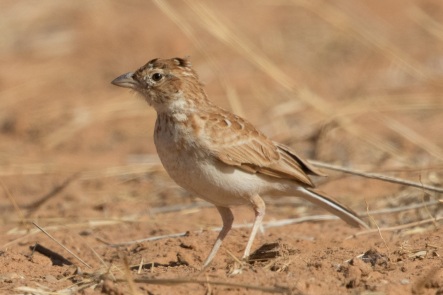
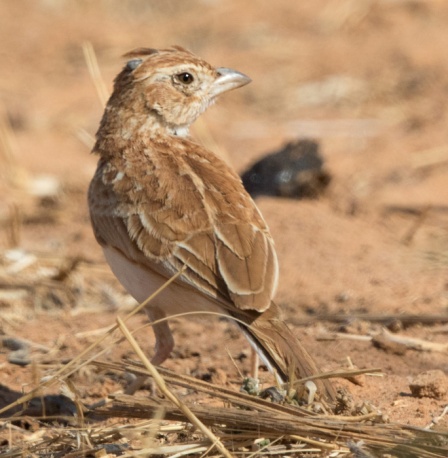
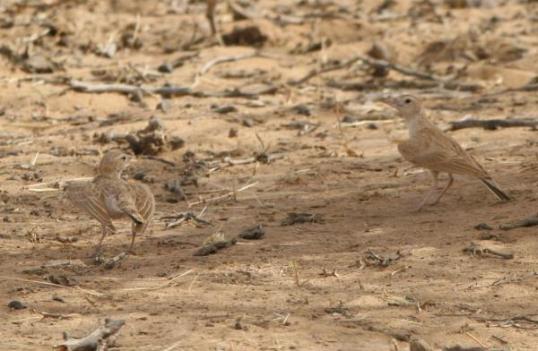
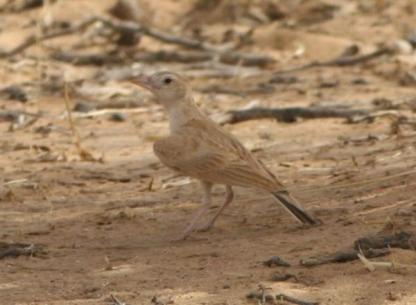
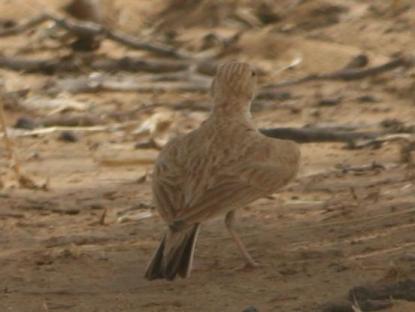
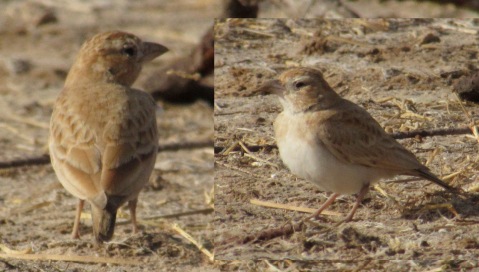
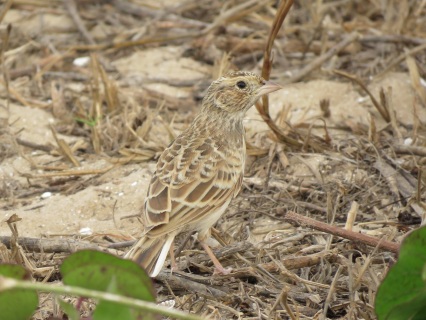
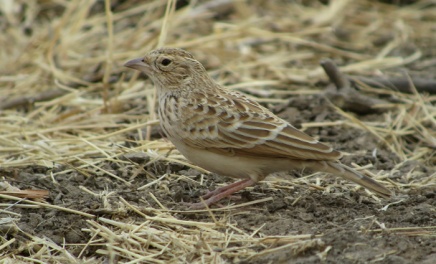


































































































































































































Excellent article, many thanks! Please can you put me in touch with the photographer? I’m writing a book on the world’s larks with Per Alstrom and we’d love to include these photos, which as you rightly say are the only ones available of the species in the field.
Best wishes
Paul Donald
Bonjour,
pour Simon,
Je suis Stéphane Bourovali-zade, nous avons été ensemble à la Ruche il y a 15 ans, et j’essayais de varier l’utilisation des pâtes, patates et riz … 🙂
Et nous nous étions vus avant ton périple à vélo !
Nous sommes tombés par hasard sur ton nom, en cherchant des infos sur le Sénégal ornitho, car nous projetons un voyage de 10 jours en janvier (Sine Saloum et Djoudj principalement)
Ce serait sympa si on pouvait se rencontrer à cette occasion !? sinon, peut-être peux-tu nous conseiller quelques spots ?
nous avons prévu de nous poser à Mar Lodj, après un passage à Bindia et Popenguine. Est-ce mieux Toubakouta ?
Ensuite, nous avons un logement vers St Louis, et grâce au site Ornithondar (tu dois connaître !) nous devrions pouvoir nous débrouiller …
On espère que ce message te parviendra, et qu’on pourra se voir :-). Peut-être à bientôt ?
Stéphane et Geneviève
Bonjour,
J’ai transmis votre message a Simon car il ne doit pas les recevoir directement. Il vous repondra donc certainement sous peu (pas sur s’il est quelque part sur le terrain ou bien chez lui en ce moment, en tout cas il n’est plus au Senegal depuis pres de deux ans).
Bram